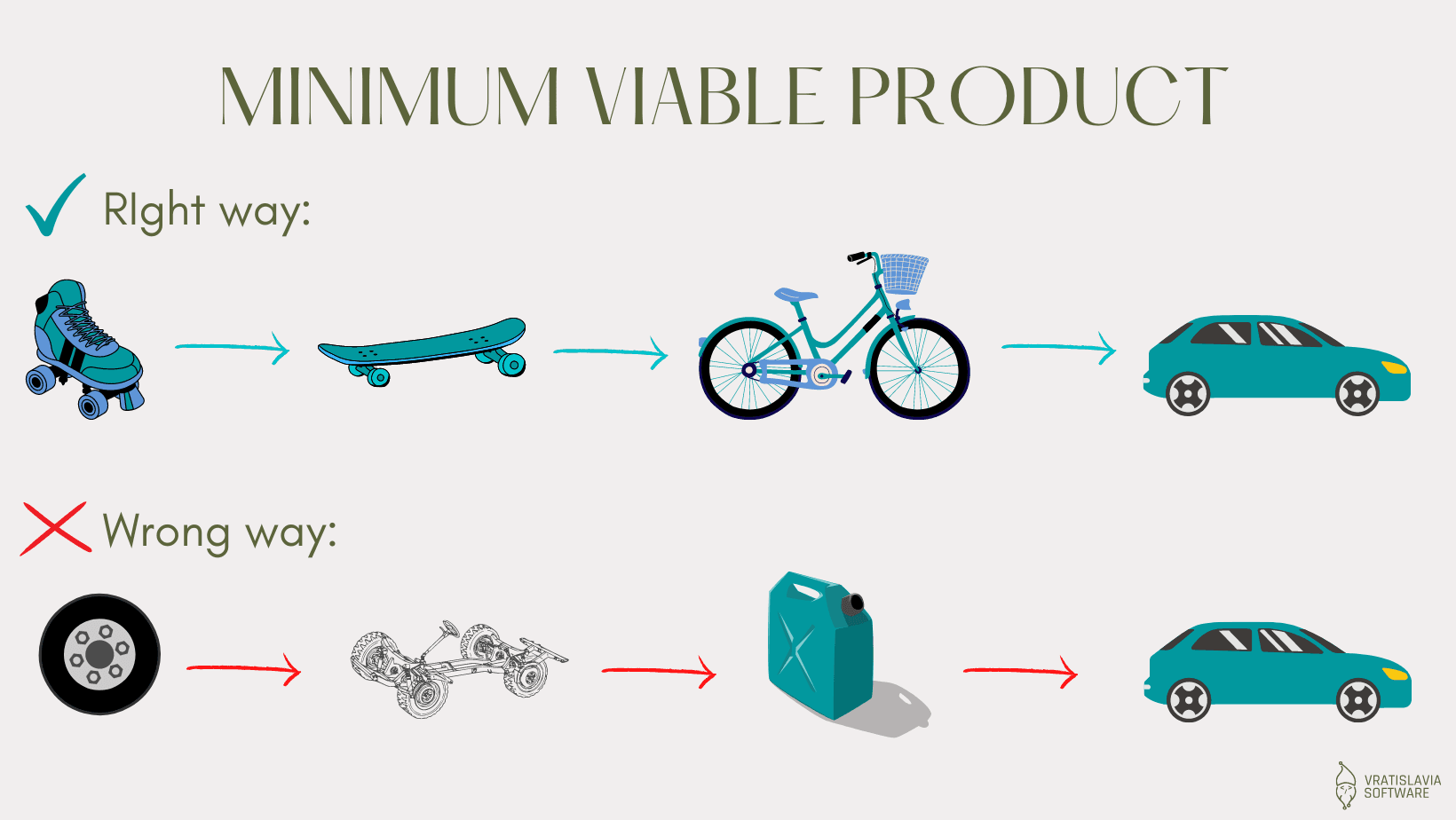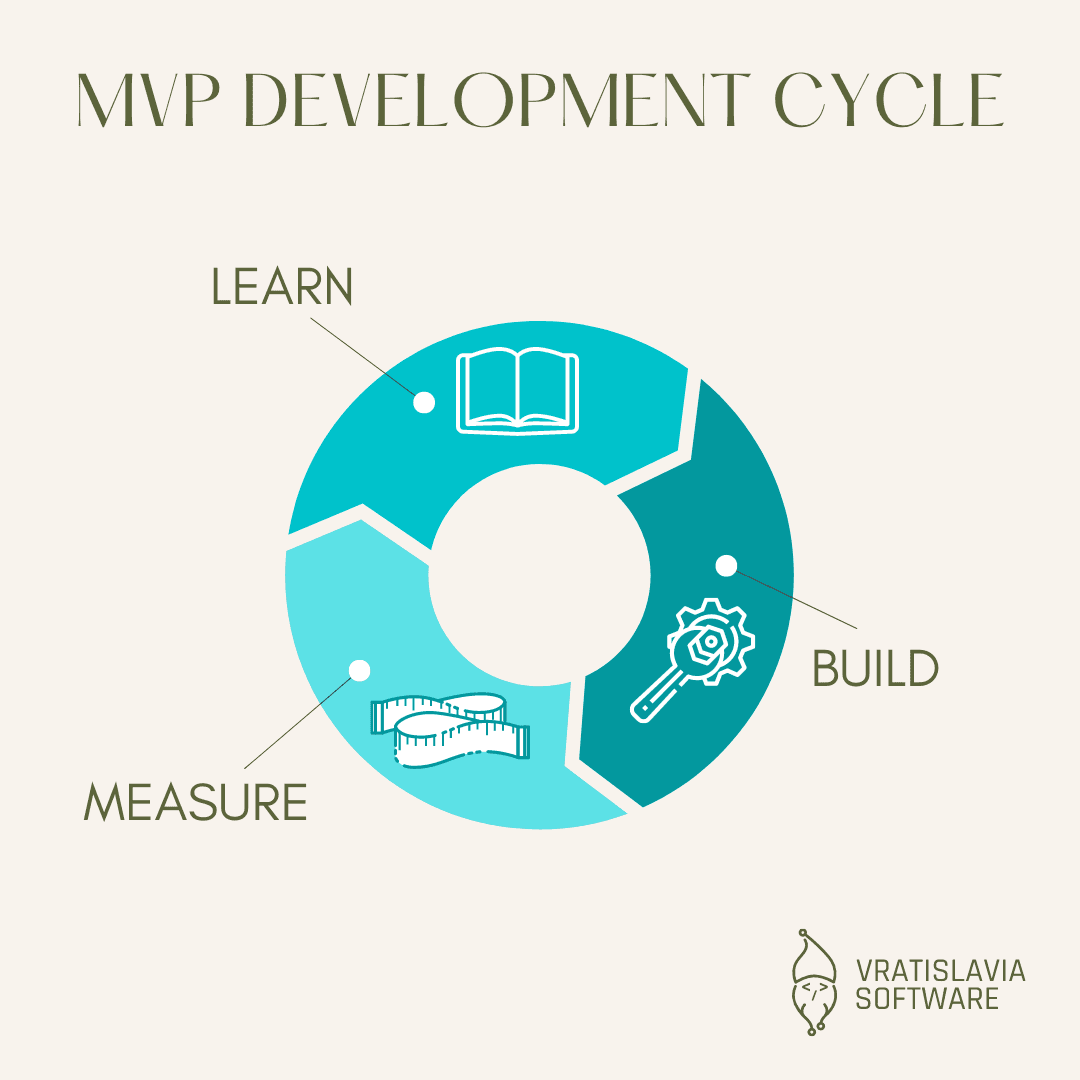What is MVP?
Minimum Viable Product (MVP) is a term coined by Frank Robinson in 2001 which defines a prototype product with sufficient amount of basic features to be implemented and kick-start a business operation. MVP is a proven method of product development, which is especially useful in startups, as it allows the investor to assess a business idea with the customers at the early stage of the project. It enables the startup to test business hypotheses and see if the customers are willing to buy the product and if the whole concept stands a chance of success.
MVP Concept
The main aim of the MVP concept is to share product with the users as quickly as possible and implement modifications, based on customer feedback, without interrupting the product operation. The future development is the way that the product needs to go through to become the most useful version. The following picture is the best representation of how MVP works:

MVP Development Cycle
MVP idea is to test it among early adopters and collect the maximum amount of customers' opinions about a product and introduce improvements based on it so that the final outcome is exactly what the users desire and are willing to pay for. The development cycle starts with launching a first version of a product and making it available to the product's initial users. The next step is to collect useful feedback from the consumers and evaluate it so that the product can undergo modification and improvement. Constant repetition of this process allows product managers to apply the changes which are required and desired by the users.

MVP Purpose
MVP approach is an established way of establishing business and it allows to:
- establish an easy and cost-efficient way to implement a business idea
- rapidly get your product off the ground,with a minimum required effort and constantly develop it
- get to know your customers, collect their feedback about your product and learn about their preferences
- build a version of the product which would appeal to a target audience
- test your business viability with the real users and experiment with various solutions
How to Define MVP?
- Specify your long-term vision and a value proposition.
- Identify the users.
- Prioritize your project objectives and determine the basic functionality and features which are of the utmost significance.
- Estimate budget.
- Build MVP.
- Implement improvements to your product, according to your customers feedback, and test them.
Lean Startup Methodology
As the startup business model evolves, MVP takes on new forms and one of them is a Lean Startup Methodology. It was created by American entrepreneur Eric Ries, and it gives a scientific insight into how to create a startup and manage it in a way that allows the company to deliver the product to the users as early as possible. As this business approach is based on Minimum Viable Product, it aims at assessing your business feasibility and product advancement.
The product development process is in accordance with a MVP cycle, where a measurement and constant learning (e.g. from users' feedback, new technologies etc.) result in product progression. The idea of the Lean Startup approach is to maximize validated learning from the user experience and advance a product with the least effort. This method allows investors to minimize expenses and eliminate wasteful practices.
Additionally, such an approach makes it possible to test if the business model stands a chance of success and introduce a new product to the market in a short period of time. What is more, it allows one to set up a business, expand it and develop gradually without any disruption in a project operation.

Vratislavia Software Can Help You Build the Minimum Viable Product
In Vratislavia Software we can give you a hand with your MVP development.
Here is step by step guide to build your MVP with us:
1. Tell us about your vision.
2. We prepare the first draft of the project.
3. Project development phase.
4. First product tests are carried out.
5. Implementation of the improvements.
6. Handing out the project to the users.
7. Optional step: improvement of the features and adding new ones based on users' feedback.
Schedule a free consultation and we will help you plan your product development.



